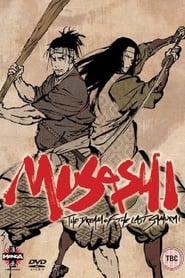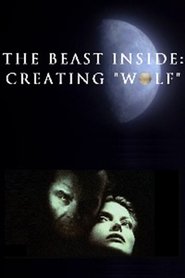
Video Sources 0 Views

Musashi: The Dream of the Last Samurai 2009 123movies
Jun. 13, 200972 Min.
Synopsis
Watch: 宮本武蔵 ―双剣に馳せる夢― 2009 123movies, Full Movie Online – An animated chronicle of the life of legendary swordsman Miyamoto Musashi (1584-1645)..
Plot: The film’s story centers on Musashi Miyamoto, one of the most famous swordsmen in Japanese history. He pioneered the Hyouhou Niten Ichi-ryuu style of two-sword fighting and wrote “The Book of Five Rings,” a book that has been compared to Sun Tzu’s “The Art of War” for its insight on tactics and strategy.
Smart Tags: N/A
Find Alternative – 宮本武蔵 ―双剣に馳せる夢― 2009, Streaming Links:
123movies | FMmovies | Putlocker | GoMovies | SolarMovie | Soap2day
Ratings:
Reviews:
New thing? An anime ‘documentary’ — or history lesson?
This particular Mushashi (there was Inagaki’s classic trilogy of the Fifties, starring Toshiro Mifune) is primarily a lecture about the famous swordsman of the late sixteenth and early seventeenth centuries in Japan. There’s much more screen time given in this anime film to a funny little old man addressing us and referring to historical texts, than to dashing sequences of Mushashi himself. Hence the visuals are not very exciting for the most part.We learn that Mushashi, who ended up as a teacher and devote of Zen and other aristocratic arts such as the tea ceremony and archery, was a man of humble origins who won over sixty duels when very young and also fought in large battles with success, thus garnering such fame as a swordsman that he sought aristocratic status, not so much for money but to pursue his calling as a martial artist. He wanted to be given a corps of horsemen, unable personally to afford even a single horse for himself. He wanted to develop swordsmanship techniques for fighting on horseback, which our lecturer suggests connects him with the knights in armor of the West. His attempts to achieve higher rank seem to have largely failed, bu he still was enormously respected and his offspring gained status. Oddly enough he preferred using a long straight wooden sword than the beautiful and valuable curved samurai blades that are so famous. For his purposes the wooden ones handled better. He won a famous duel with Sasaki Kojirō by arriving very late and using a very short wooden sword. Details of all these events are confused and lost in conflicting legend.
Understanding some of the details, such as Mushashi’s participation of the war between the Toyotomi and the Tokugawa clans, requires a fuller knowledge of Japanese history than the average American viewer is likely to possess. Obviously Mushashi had a rich and varied career with many vicissitudes, emerging as a pioneer of sword techniques, master swordsman, and the author of various treatises on swordsmanship and conduct, practicing the artistic side of Bushido, a real renaissance man. He is famous for teaching the use of two swords at once, one short and the other long. Our little lecturer makes much of the The Book of Five Rings, which he began in his late fifties and finished not too long before he died at sixty-three. The film’s lecturer bewails the fact that in the Russo-Japanese war the Japanese lost faith in hand-to-hand combat, at which they had traditionally
Then there was a turnaround, with Mushashi being celebrated in kodan (oral chanted storytelling), and books on “Bushido,” (actually a new word) the “spirit of the samurai” becoming influential. It’s only after fifty minutes of lecturing that the film moves into kodan mode and tells Mushashi’s story in sweeping black and white anime images during the last fifteen minutes or so.
Viewers who come to ‘Mushashi’ expecting beautiful, dashing images and dramatic battle sequences will be largely disappointed, though they will learn something about Japanese cultural history, if they pay attention. But with its jazzed-up kodan music, pop closing theme song, and corny use of western chestnuts like Strauss waltzes, Chopin, and Beethoven’s Ninth, this may be designed more for a young Japanese audience than for westerners. Anyway, at best it’s just a little footnote on the great Samurai movies of the past.
Director Mizuho Nishikubo and writer Mamoru Oshii probably deserve equal credit for the 72-minute film. Derek Elley of ‘Variety’ calls this “Most likely the first example of the anime form being used for a documentary” and adds “the pic can be appreciated by all Asiaphile viewers.”
Review By: Chris Knipp
New thing? An anime ‘documentary’ — or history lesson?
This particular Mushashi (there was Inagaki’s classic trilogy of the Fifties, starring Toshiro Mifune) is primarily a lecture about the famous swordsman of the late sixteenth and early seventeenth centuries in Japan. There’s much more screen time given in this anime film to a funny little old man addressing us and referring to historical texts, than to dashing sequences of Mushashi himself. Hence the visuals are not very exciting for the most part.We learn that Mushashi, who ended up as a teacher and devote of Zen and other aristocratic arts such as the tea ceremony and archery, was a man of humble origins who won over sixty duels when very young and also fought in large battles with success, thus garnering such fame as a swordsman that he sought aristocratic status, not so much for money but to pursue his calling as a martial artist. He wanted to be given a corps of horsemen, unable personally to afford even a single horse for himself. He wanted to develop swordsmanship techniques for fighting on horseback, which our lecturer suggests connects him with the knights in armor of the West. His attempts to achieve higher rank seem to have largely failed, bu he still was enormously respected and his offspring gained status. Oddly enough he preferred using a long straight wooden sword than the beautiful and valuable curved samurai blades that are so famous. For his purposes the wooden ones handled better. He won a famous duel with Sasaki Kojirō by arriving very late and using a very short wooden sword. Details of all these events are confused and lost in conflicting legend.
Understanding some of the details, such as Mushashi’s participation of the war between the Toyotomi and the Tokugawa clans, requires a fuller knowledge of Japanese history than the average American viewer is likely to possess. Obviously Mushashi had a rich and varied career with many vicissitudes, emerging as a pioneer of sword techniques, master swordsman, and the author of various treatises on swordsmanship and conduct, practicing the artistic side of Bushido, a real renaissance man. He is famous for teaching the use of two swords at once, one short and the other long. Our little lecturer makes much of the The Book of Five Rings, which he began in his late fifties and finished not too long before he died at sixty-three. The film’s lecturer bewails the fact that in the Russo-Japanese war the Japanese lost faith in hand-to-hand combat, at which they had traditionally
Then there was a turnaround, with Mushashi being celebrated in kodan (oral chanted storytelling), and books on “Bushido,” (actually a new word) the “spirit of the samurai” becoming influential. It’s only after fifty minutes of lecturing that the film moves into kodan mode and tells Mushashi’s story in sweeping black and white anime images during the last fifteen minutes or so.
Viewers who come to ‘Mushashi’ expecting beautiful, dashing images and dramatic battle sequences will be largely disappointed, though they will learn something about Japanese cultural history, if they pay attention. But with its jazzed-up kodan music, pop closing theme song, and corny use of western chestnuts like Strauss waltzes, Chopin, and Beethoven’s Ninth, this may be designed more for a young Japanese audience than for westerners. Anyway, at best it’s just a little footnote on the great Samurai movies of the past.
Director Mizuho Nishikubo and writer Mamoru Oshii probably deserve equal credit for the 72-minute film. Derek Elley of ‘Variety’ calls this “Most likely the first example of the anime form being used for a documentary” and adds “the pic can be appreciated by all Asiaphile viewers.”
Review By: Chris Knipp
Other Information:
Original Title 宮本武蔵 ―双剣に馳せる夢―
Release Date 2009-06-13
Release Year 2009
Original Language ja
Runtime N/A
Budget 0
Revenue 0
Status Released
Rated N/A
Genre Animation, Action
Director Mizuho Nishikubo
Writer Mamoru Oshii
Actors Rintarô Haryû
Country Japan
Awards 3 nominations
Production Company N/A
Website N/A
Technical Information:
Sound Mix N/A
Aspect Ratio N/A
Camera N/A
Laboratory N/A
Film Length N/A
Negative Format N/A
Cinematographic Process N/A
Printed Film Format N/A
Original title 宮本武蔵 ―双剣に馳せる夢―
TMDb Rating 6.3 6 votes













